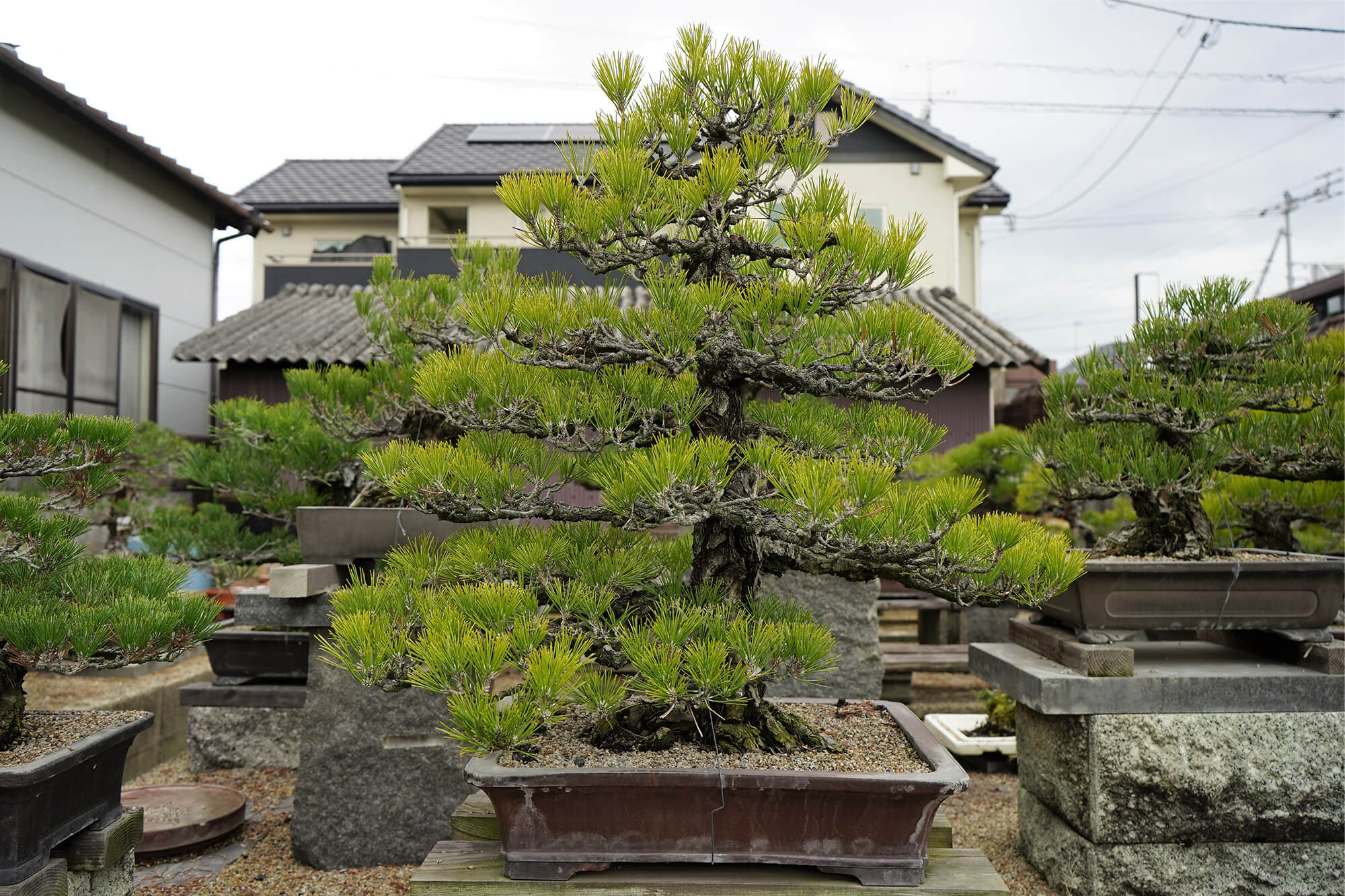Wiring to produce natural shapesKeishoen
A caretaker of the community and of bonsai promotion
Bonsai gardens developed together in a section of the Kokubunji area, north of the JR Yosan Line. Keishoen stands apart from them, physically, south of National Road No. 11.
The shelves at Keishoen cover an area 600 tsubo (approximately 1,983 square meters) in size. Equipped with an automatic watering device, they extend all the way to a garden section north of the National Road.
YOSHIHARA Masaaki, the owner of Keishoen, is a caretaker of the local community who has been a town assembly member and the head of the Kokubunji chapter of the Japan Bonsai Association of the Kagawa Prefectural Agricultural Cooperatives . YOSHIHARA has devoted himself to promoting bonsai, organizing the Kokubunji Green Festa event, raising funds for a new nishiki matsu variety called yume nishiki that took 15 years to develop, and helping select bonsai as mementos for participants in a National Athletic Meet held in Kagawa Prefecture. YOSHIHARA is also known as a master of the bonsai technique of wiring. He has brought his expertise to many places, including wiring classes at bonsai events.
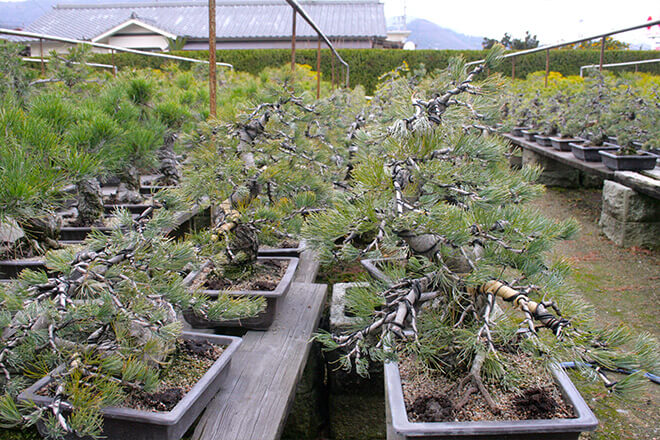
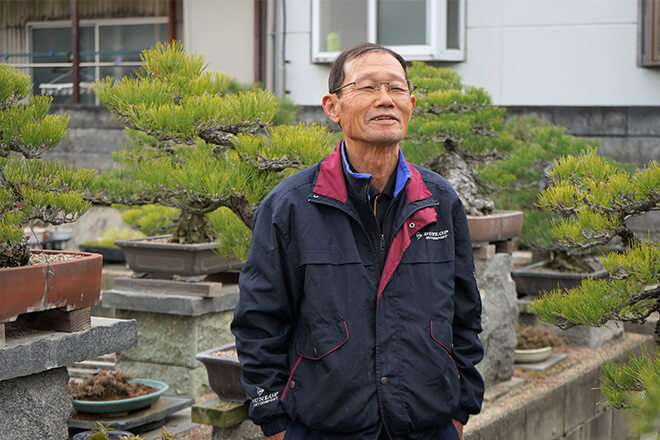
Wiring for the training and pruning of trees
Keishoen sells about 250 bonsai grown using the technique of wiring every year. The garden is scheduled to deliver 300 Japanese white pines bought last year to the JA Kagawa Kokubunji Bonsai Center after wiring them and adjusting their shapes from this fall.
Eight types of wires in different thicknesses are hung on the walls of the workshop at Keishoen. The wire materials have changed over the years, from iron to copper and aluminum. YOSHIHARA places wires on pines about 70 centimeters tall in confident movements, using self-designed tools custom made by a blacksmith to bend trunks and twist thick branches.
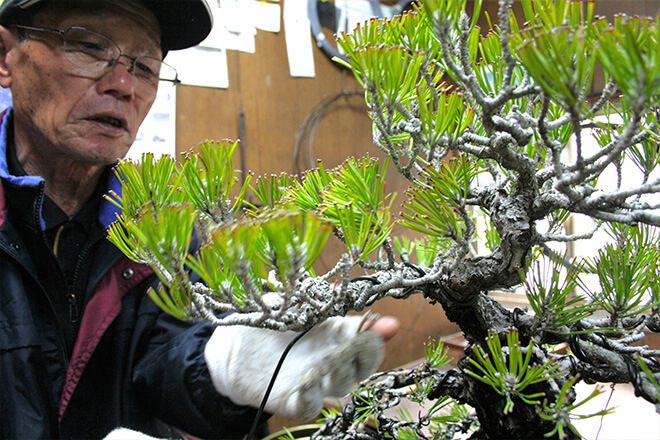
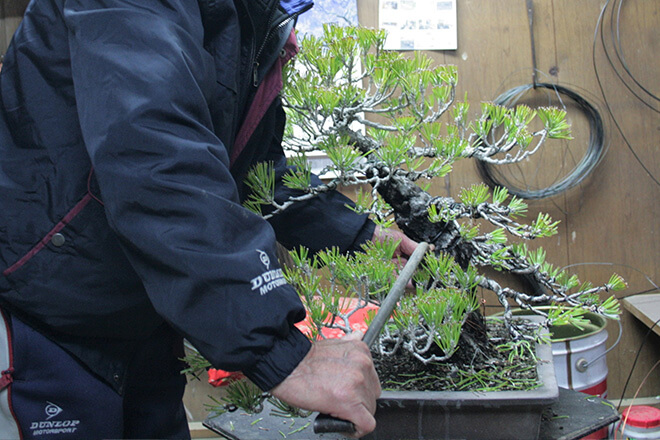
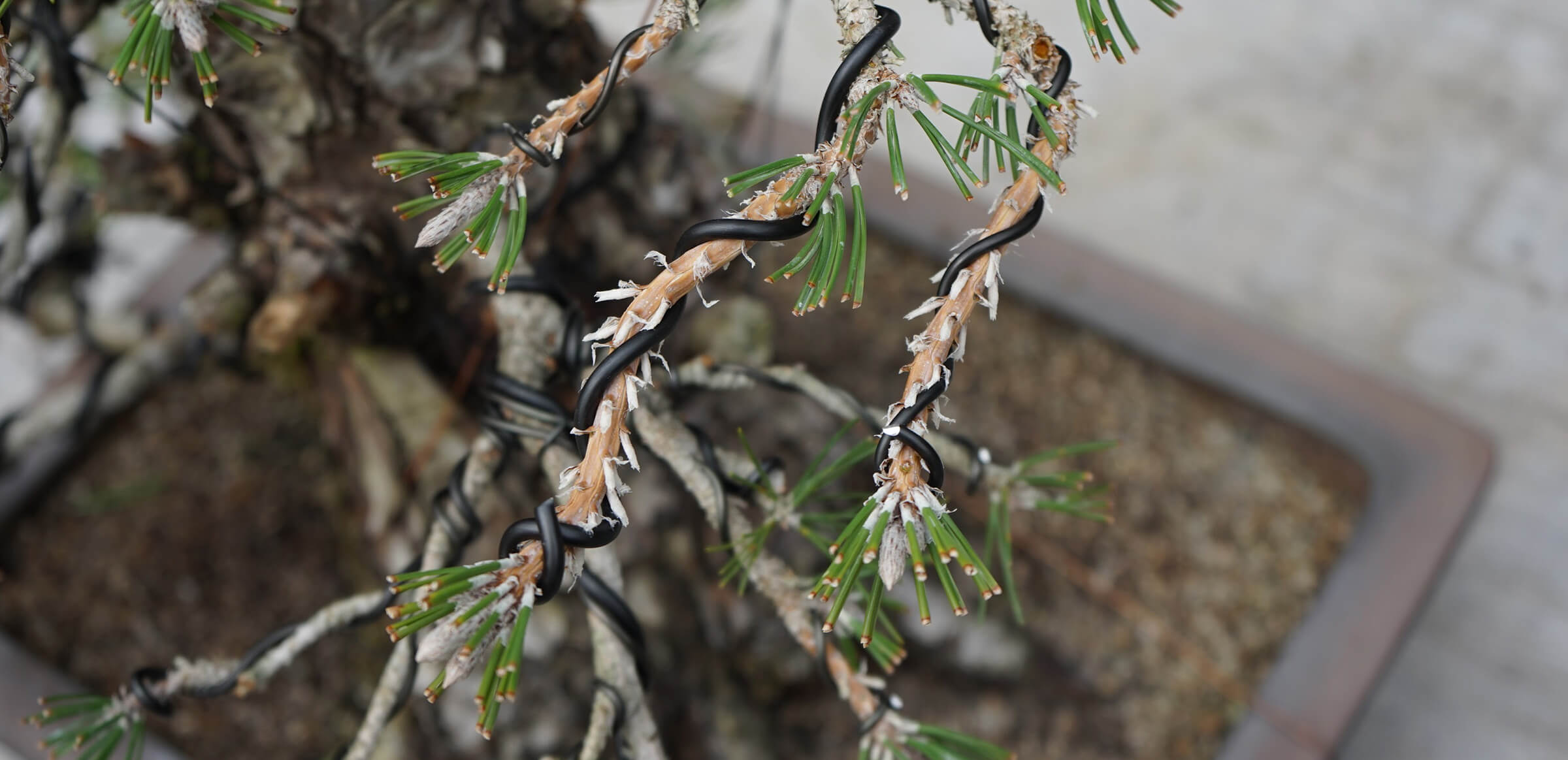
Distinctive skills only human hands can perform
“No two trees are shaped in the same way,” notes YOSHIHARA, smiling, but his hands not straying from the task of wiring. “Each tree is different in the same way humans are.” YOSHIHARA declares clearly that is why, “machines cannot wire bonsai.”
“Nutrients first go to the top of trees,” YOSHIHARA says to share his masterly skills. “Then, they come down if any portions of them are left. Nutrients flow in a twisted way. There are directions to which branches tend to bend. I wire branches, checking those directions with my hands.” Wires set on branches begin to bite into them after about two or three years. Growers cut wires and remove them when they start biting into the trunk. Branches are shaped in this way.
Bonsai shapes express nature as much as possible. Growers’ individuality manifests in the directions in which the branches curve and extend. Amazingly, people in bonsai say that they can “tell who performed wiring most of the time by studying how a bonsai is trained and pruned.”
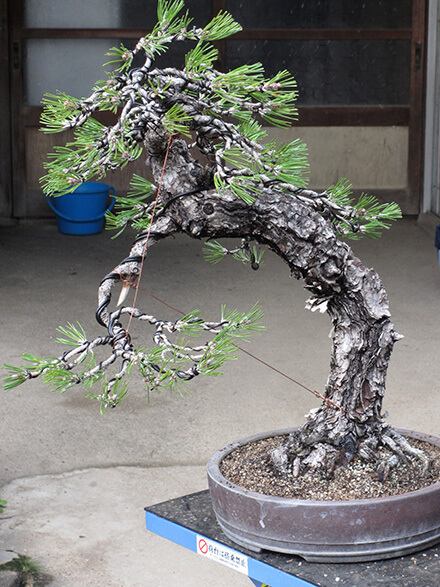
Meeting good trees intuitively
YOSHIHARA teaches things like how to tell which is the front side of a bonsai and how to shape trees. He advises beginners to go to the Bonsai Center. “Bonsais are priced clearly there,” informs YOSHIHARA. “People naturally stop their feet in front of bonsai that exude vitality, which is intuitively attractive.”
“Give me a call if there is anything you want to ask, like how to get the hang of taking care of bonsai,” says YOSHIHARA. As this offer well demonstrates, bonsai masters are friendly and open-minded.
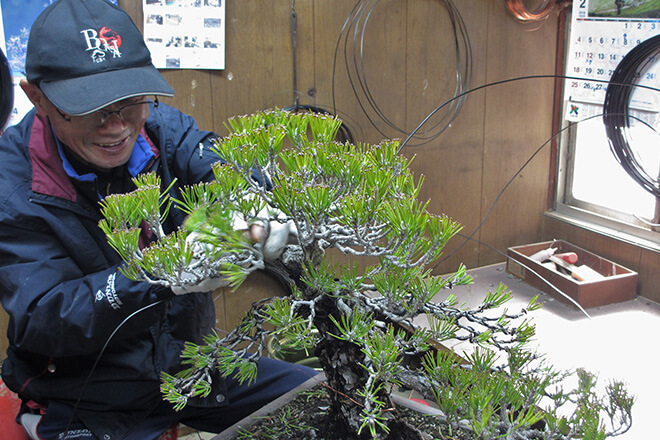
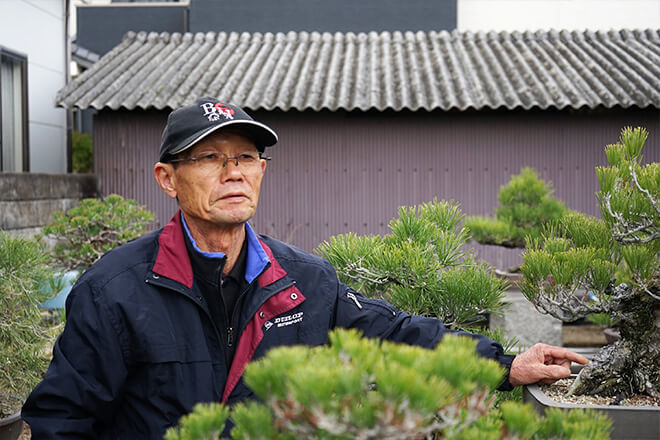
Keishoen
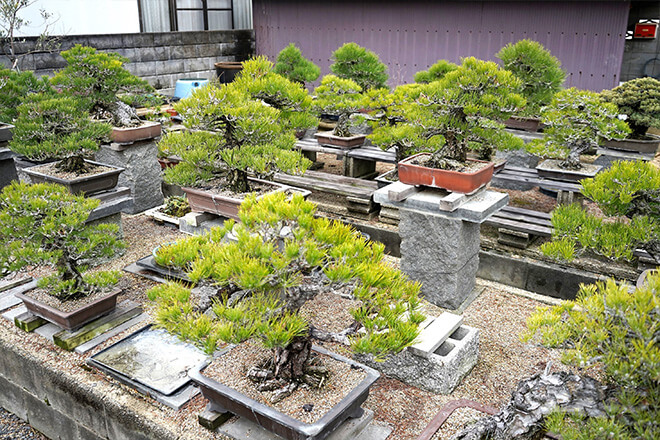
- ADDRESS
- 1302 Nii, Kokubunji-cho, Takamatsu City, Kagawa Prefecture
- TEL
- +81-87-874-0204

